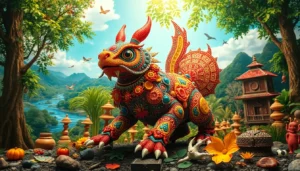Table of Contents
ToggleIn a world where fashion meets film, “ready to wear movies” are taking center stage, blending style with storytelling like never before. Imagine a cinematic experience where characters strut down the screen in outfits that could easily grace the runway. It’s not just about plot twists; it’s about plot threads—literally!
These films invite viewers into a realm where every stitch tells a story and every outfit has its own personality. Whether it’s a romantic comedy or a high-stakes thriller, the wardrobe choices can make or break the narrative. So grab your popcorn and get ready to dive into a world where the only thing more dramatic than the plot is the fashion. Who knew that watching a movie could inspire your next wardrobe upgrade?
Overview of Ready To Wear Movie
“Ready to Wear” (1994) stands as a pivotal film that merges fashion and cinema, reflecting the complexities of the fashion industry through its narrative. Directed by Robert Altman, the film showcases a star-studded ensemble, featuring actors like Julia Roberts and Tim Robbins. Each character’s wardrobe serves not just as a backdrop but also drives the story forward, illustrating how attire influences personal relationships and professional dynamics.
The film captures the buzz of the Paris fashion week, emphasizing the high-energy atmosphere and cutthroat competition. Viewers witness how garments symbolize status and aspiration, shaping characters’ identities. Iconic designer outfits in the film echo the real-world challenges that fashion faces, from creativity to commercialization.
Notably, “Ready to Wear” explores themes such as desire and ambition within the fashion landscape. Characters navigate romance and rivalry against a backdrop of glamorous runway shows. As much as the storyline unfolds, the fashion dialogue resonates, portraying garments as expressions of individuality.
Cinematically, the film employs a unique narrative style. It weaves various storylines together, much like a collection of diverse fashion pieces. Each subplot reflects a facet of the fashion world, contributing to a multifaceted portrayal that enriches the viewing experience.
Overall, “Ready to Wear” exemplifies the intersection of style and storytelling, urging audiences to recognize fashion’s role in shaping narratives. Through its vibrant depictions of wardrobe choices, the film invites viewers to appreciate the artistry behind each outfit, proving that fashion can be a powerful narrative tool.
Plot Summary

“Ready to Wear” captures the intertwined worlds of fashion and film in a vibrant narrative. The story unfolds during Paris Fashion Week, centering on a diverse cast of characters, each navigating personal and professional challenges amid the glamorous chaos.
Main Characters
An assortment of unique characters drives the plot forward. The charismatic fashion designer, played by Julia Roberts, embodies ambition while wrestling with her identity in the industry. A famed model, portrayed by Kate Hudson, contends with the pressure of fame and relationships. Meanwhile, the sharp-tongued critic, represented by Tim Robbins, adds tension with his pivotal reviews that influence public perception. Each character’s wardrobe reflects their inner struggles and aspirations, enhancing the narrative’s depth.
Key Themes
Ambition serves as a primary theme throughout the film. Characters chase their dreams while grappling with the realities of the fashion world. The tension between desire and rivalry highlights the competitive nature of the industry. Relationships—both romantic and professional—reveal complexities exacerbated by high-stakes environments. Fashion transcends mere aesthetics, becoming a powerful storytelling vehicle that explores identity, status, and the human experience.
Cinematic Techniques
Cinematic techniques significantly enhance the storytelling in “Ready to Wear.” The film’s exploration of fashion occurs through Robert Altman’s distinctive directorial style and striking visual aesthetics.
Directorial Style
Robert Altman’s approach to direction blends realism with a documentary feel. He captures the backstage dynamics of Paris Fashion Week, immersing viewers in the hectic atmosphere. Ensemble casting emerges as a hallmark of his style, allowing multiple narratives to coexist. Dialogue overlaps create a lively, bustling soundscape, reflecting the chaos inherent in the fashion industry. Altman’s non-linear storytelling intertwines various character arcs, each contributing to the greater narrative. By showcasing a diverse range of perspectives, he highlights the interconnectedness of ambition and rivalry.
Visual Aesthetics
Visual aesthetics play a crucial role in conveying themes within “Ready to Wear.” The cinematography presents glamorous runway shows, showcasing vibrant colors and intricate designs. Each wardrobe reflects individual character traits, revealing deeper layers of motivation. Lighting choices enhance the opulence of fashion events, creating an alluring atmosphere. Using close-ups, the film captures the authenticity of emotions, expressing characters’ desires and conflicts. The careful selection of locations also contributes to the film’s visual richness, grounding characters in the high-stakes world they inhabit. Through these artistic choices, viewers experience fashion as a profound narrative element.
Audience Reception
Audience reception of “Ready to Wear” highlights its unique blend of fashion and storytelling. Critics often noted the film’s ambitious narrative and ensemble cast.
Critical Reviews
Critical reviews for “Ready to Wear” reflect a mix of admiration and skepticism. Some praised Robert Altman’s direction for its authenticity, capturing the bustling essence of Paris Fashion Week. Others pointed out that the film’s numerous storylines, while innovative, sometimes lacked depth. Reviewers appreciated Julia Roberts’ charismatic performance, calling it a standout among a strong cast. Overall, the film sparked discussions about the fashion industry’s complexities, resonating with fashion enthusiasts and casual viewers alike.
Box Office Performance
Box office performance indicates a modest reception for “Ready to Wear.” Despite its star-studded cast, the film grossed approximately $6 million domestically, underperforming against production costs. Audiences showed interest during its opening weekend, but the novelty of its concept didn’t translate into sustained ticket sales. Factors like competition from other films at the time may have impacted performance. Marketing strategies focused on its fashion elements, drawing in a niche audience. Nonetheless, the film established itself as a cult favorite among fashion aficionados, maintaining cultural relevance over the years.
Cultural Impact
“Ready to Wear” reflects significant cultural elements tied to fashion and film. Characters’ outfits contribute to a larger conversation about identity and ambition within society. Fashion plays a central role in shaping narratives, resonating with audiences who relate to the characters’ struggles.
Drifting through the glamour of Paris Fashion Week, the film encapsulates the fast-paced nature of the fashion industry. Viewers witness how each garment symbolizes societal status, aspiration, and personal expression. The film promotes discussions on the impact of clothing choices, both personal and professional.
Fashion designers, models, and critics showcased in the film reveal the complexities of their professions, inviting empathy from the audience. Julia Roberts’ character embodies the pursuit of ambition, illustrating the intense pressure faced by fashion professionals. Tim Robbins’ critic character further emphasizes the influence of public perception on self-identity.
Critical reviews highlighted varied perspectives on the film’s approach to storytelling. Some praise Altman’s authenticity, noting his ability to blend chaos with realism effectively. Others argue that the abundance of storylines occasionally detracts from depth.
“Ready to Wear” succeeded in planting itself within popular culture through its unique style and storytelling. While the film grossed roughly $6 million domestically, it subsequently gained a cult following among fashion enthusiasts. Its legacy continues to inspire conversations around the intertwining worlds of fashion and film, encouraging viewers to appreciate fashion’s role in narrative construction.
The emergence of “ready to wear movies” signifies a fascinating evolution in storytelling where fashion plays a pivotal role. Films like “Ready to Wear” demonstrate how attire can shape character arcs and influence narrative depth. By intertwining fashion with cinematic elements, these movies invite viewers to explore themes of ambition and identity in a visually compelling manner.
As audiences engage with the vibrant world of fashion on screen, they gain a deeper appreciation for the artistry behind wardrobe choices. This trend not only enhances the viewing experience but also sparks conversations about the complexities of the fashion industry. Ultimately, “ready to wear movies” encourage a fresh perspective on how style can drive storytelling and resonate with viewers on multiple levels.




